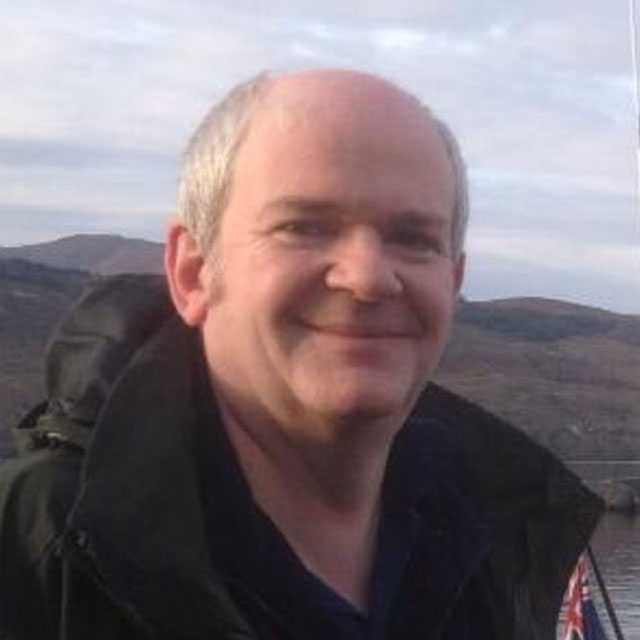
Martin Fowler
NASA Citizen Scientist
Liverpool University
Imperial College of Science & Technology
Martin is a retired scientist working independently from his home in Winchester, a city in Hampshire, England.
As a retired professional scientist, I wanted to continue to contribute to scientific research. Having worked for some time with data from the MicroObservatory Robotic Telescope Network operated by the Harvard–Smithsonian Center for Astrophysics (CfA), I was approached by the Exoplanet Watch team soon after its inception in 2019 to see how my experience with MicroObservatory could contribute to the project. Specifically, I had developed a workflow to convert a series of MicroObservatory images into a light curve showing the variation in the brightness of a star over time as a large Hot Jupiter exoplanet transited in front of it. By modeling the observed transit, estimates could be derived of the planet’s orbital parameters, known in astronomy as the “ephemeris.” I have been involved in Exoplanet Watch ever since, beta testing software and contributing over 150 transit observations to the project.
My other research activities include the application of satellite remote sensing to archaeology, palaeoentomology (i.e., the study of fossil insects), and the ecology of bats and hedgehogs around my local village. Away from my research “work,” I enjoy cycling and walking in the countryside, photographing landscapes and wildlife along the way.
Citizen scientists can make valuable contributions to science projects!
The recent Exoplanet Watch–related work and papers I’ve been involved with include:
“Utilizing Small Telescopes Operated by Citizen Scientists for Transiting Exoplanet Follow-up,” published in the Publications of the Astronomical Society of the Pacific. For this project, I contributed the analysis of MicroObservatory images of stars that host Hot Jupiter exoplanets. The analysis showed that high-quality light curves showing the “dip” in brightness of the star from the transiting exoplanet could be obtained from a small (6-inch aperture) telescope. From such light curves, the exact times when the exoplanet crossed in front of the star could be determined and used to update the orbital parameters of the planet.
“Observing transiting exoplanets with the MicroObservatory: 43 new transit light curves of the hot Jupiter HAT-P-32 b,” published in the Journal of the British Astronomical Association. In this paper, I used MicroObservatory images to study the Hot Jupiter HAT-P-32 b. I analyzed 43 transits of the exoplanet between 2013 and 2020 using “MEOW,” a “home brew” workflow to accurately determine the times when the exoplanet transited its host star. This allowed us to update the orbital parameters of the exoplanet. (For more information about orbital parameters, check out this page).
“Searching for Transit Timing Variations and fitting a new ephemeris to Transits of TrES-1b,” published in the Journal of the Korean Astronomical Society. This project studied observations of the Hot Jupiter exoplanet TrES-1 b to see whether analyzing variations in its transit times might indicate the gravitational interference of another (unknown) planet.
“Utilizing a Global Network of Telescopes to Update the Ephemeris for the Highly Eccentric Planet HD 80606 b and to Ensure the Efficient Scheduling of JWST,” published in The Astronomical Journal. A large team of contributors (41 co-authors in total) worked to combine observations from numerous small telescopes to better constrain and describe the long-duration and unusually highly eccentric orbit of an exoplanet for follow-on study by the James Webb Space Telescope. For this work, I contributed to the planning and subsequent analysis of observations made using the MicroObservatory telescopes.
I’ve also written and contributed to numerous peer-reviewed papers covering supernovae, exoplanets, and the application of satellite remote sensing to archaeology. Further details can be found in my profile on ResearchGate.
No, thankfully I have access to both.
Exoplanet Watch. I enjoy making a positive contribution to the maintenance of exoplanet ephemerides and, potentially, the discovery of new exoplanets based on transit timing variations.
Following a career in biomedical and government research, I have translated my scientific training, experience, and analytical skills into the field of astronomy. Having discovered the MicroObservatory robotic telescopes over 10 years ago, I initially learned how to extract measurements of the brightness of stars from the telescope images and to use the data in the follow-up of nearby exploding stars known as supernovae, which I have reported in several scientific papers. As a NASA citizen scientist involved in Exoplanet Watch, I have learned a lot about the astrophysics of exoplanets and the reduction and analysis of transit observations. I have also broadened my knowledge of stars through the serendipitous observation and analysis of variable stars that are covered in MicroObservatory images of stars targeted for exoplanet transit observations, which has opened up new avenues of research for me.
Go for it! Exoplanet Watch is a very inclusive project, and you will be able to contribute even if you do not have access to your own telescope. The software required to participate in the project, along with data from over 10 years of MicroObservatory observations of transiting exoplanets, are made freely available for you to use.
Dr. Rob Zellem (Jet Propulsion Laboratory) is an inspirational leader of the Exoplanet Watch project. He is very enthusiastic about the project and is ever helpful to new (and old) members in providing advice and helping in their contributions to the project.
Likewise, Frank Sienkiewicz (CfA), the engineer responsible for the maintenance and operation of the MicroObservatory telescopes, has helped me from the start with my understanding of their use. Together with Mary Dussault (CfA), he has encouraged my astronomical research as a citizen scientist. Frank works tirelessly to keep the telescopes working and providing data for both educational projects and Exoplanet Watch, yet is always willing to provide help and advice when needed.
Around five to six hours per week.
Planetary science is a global profession.

